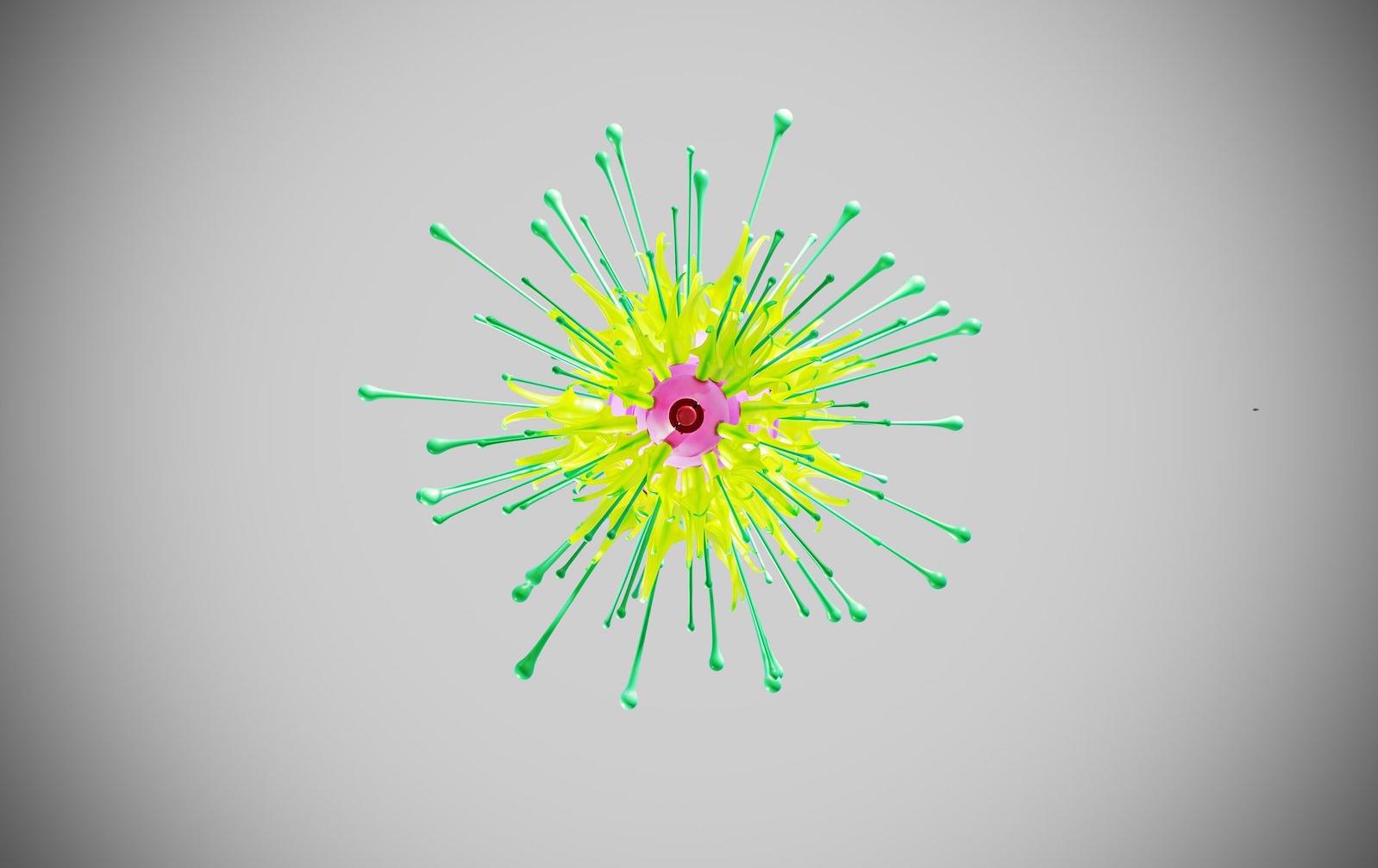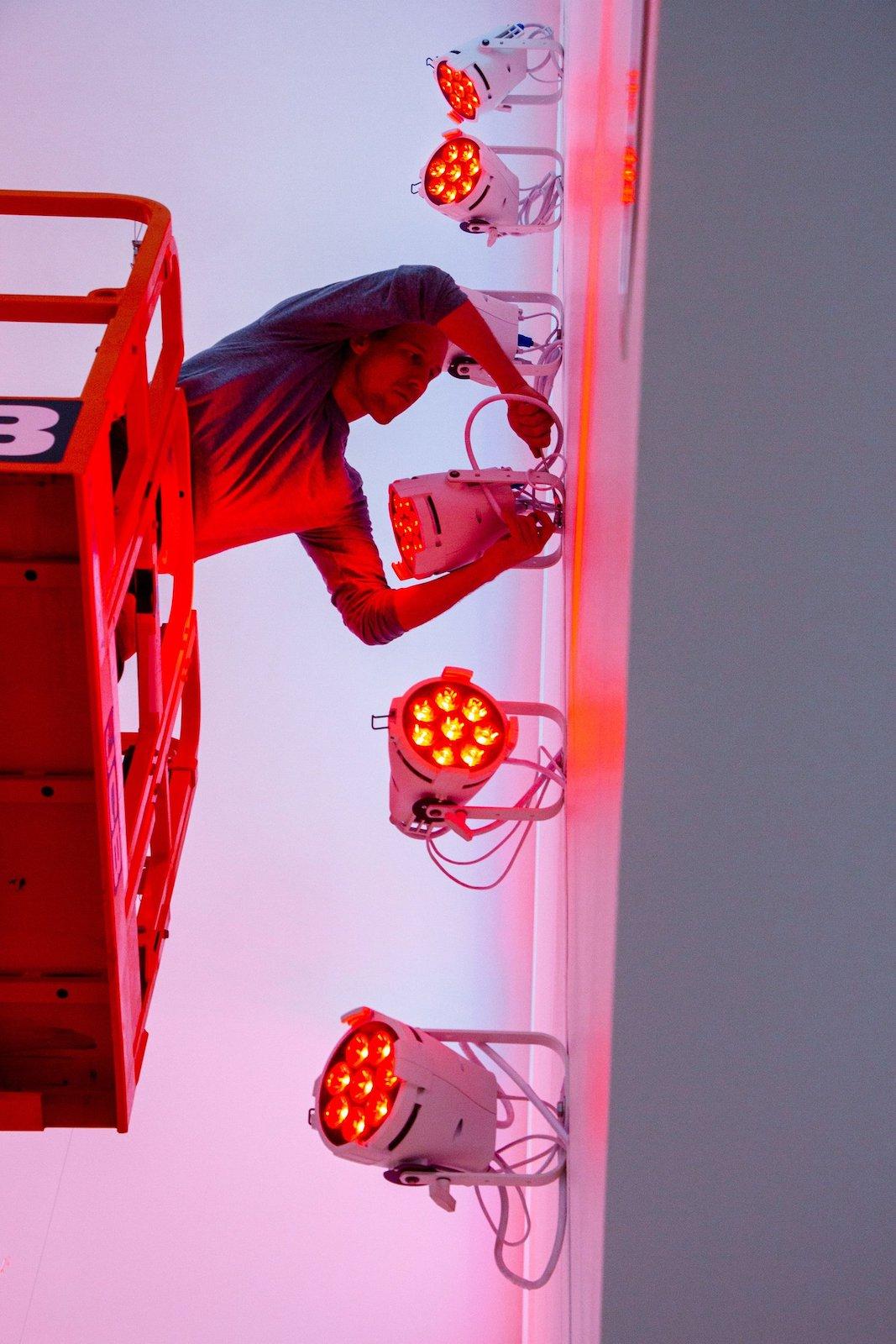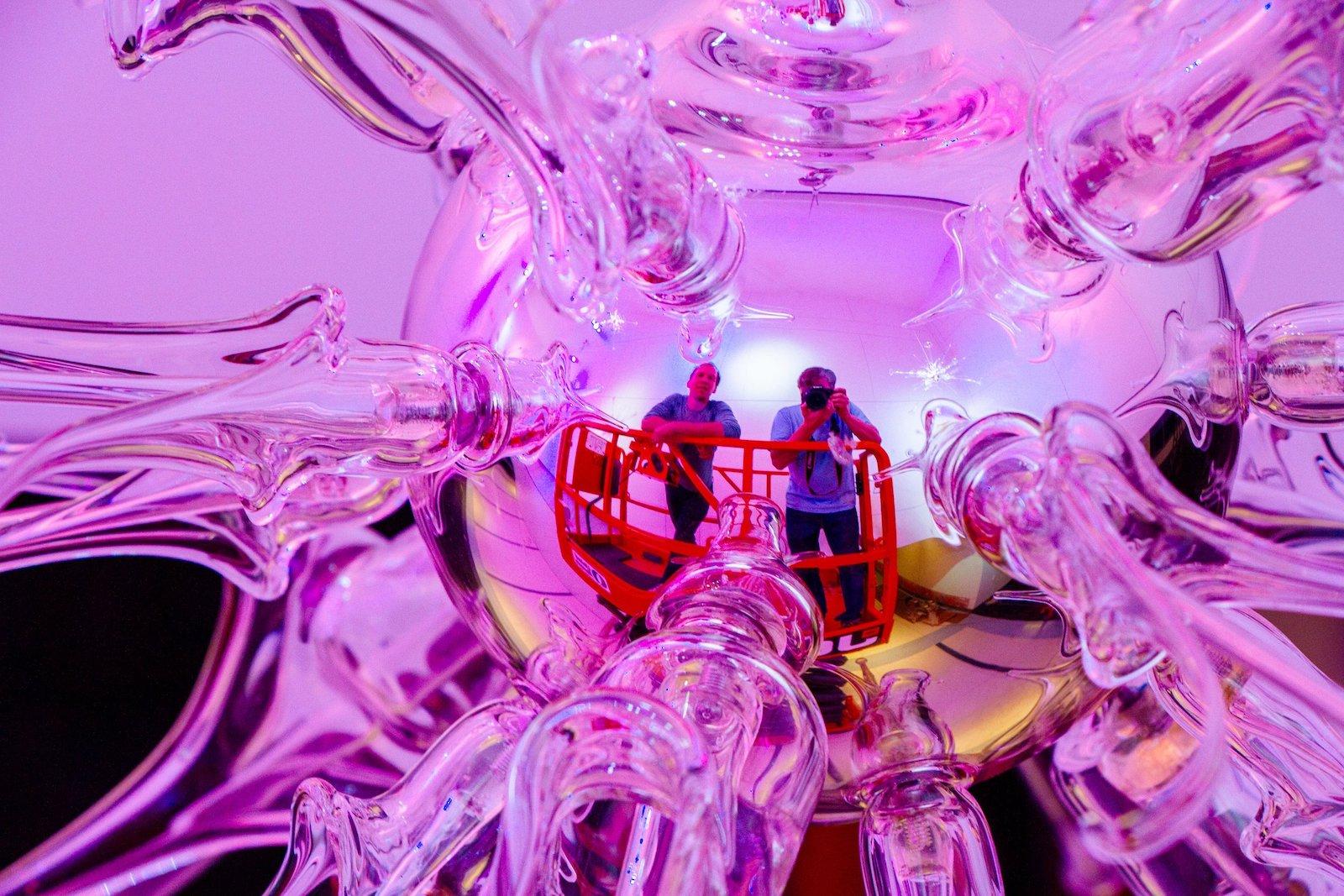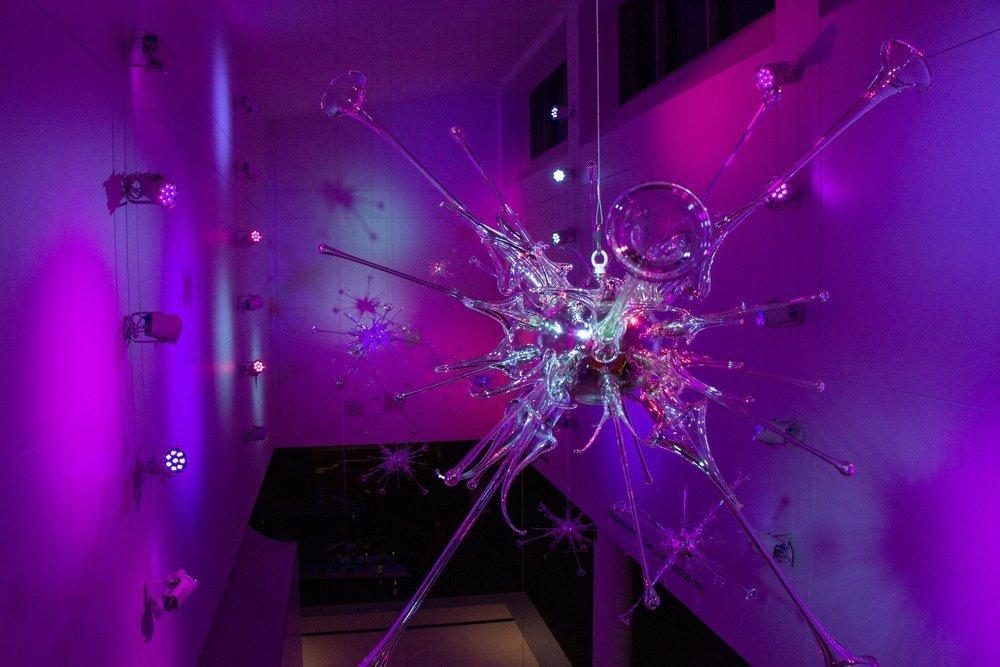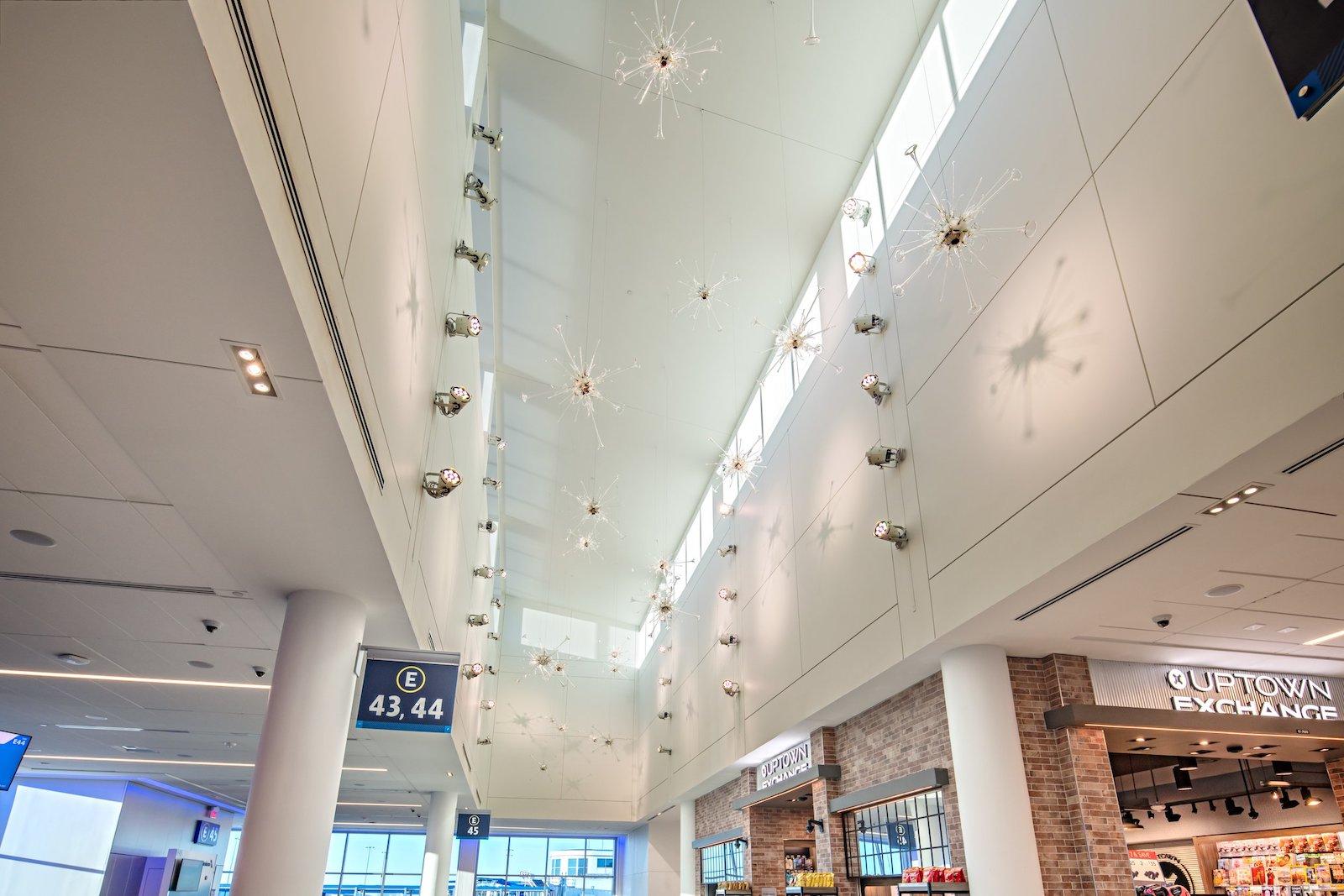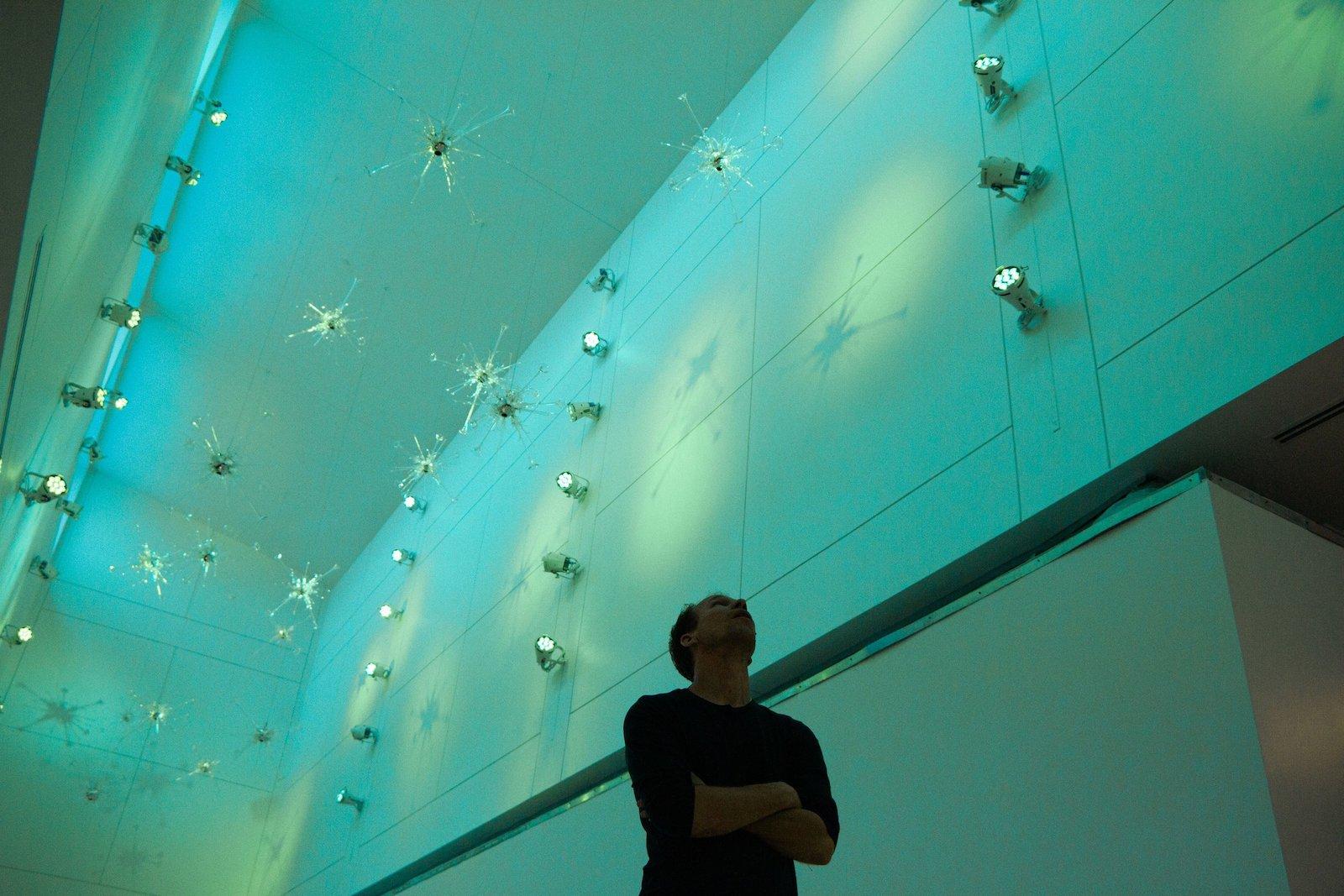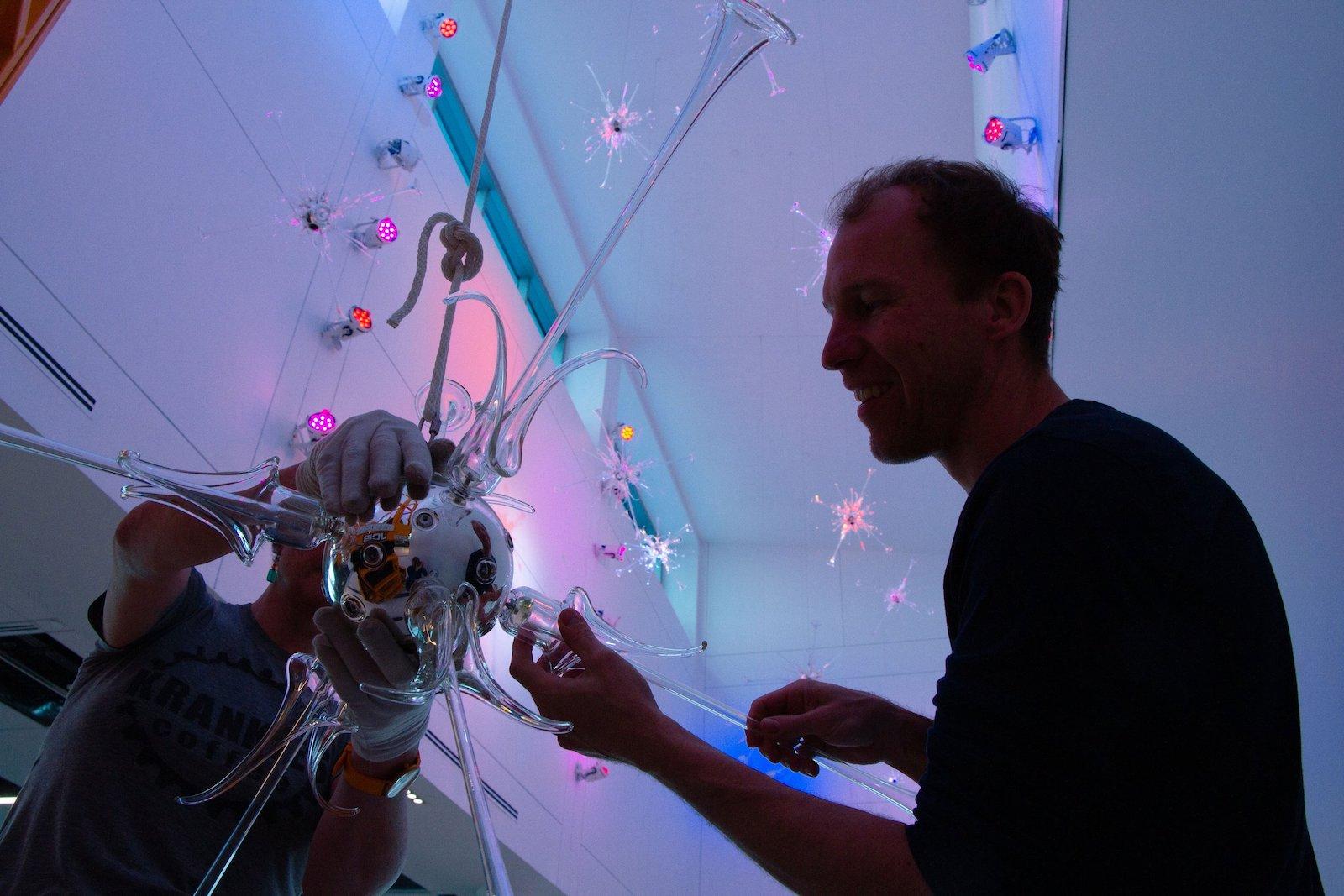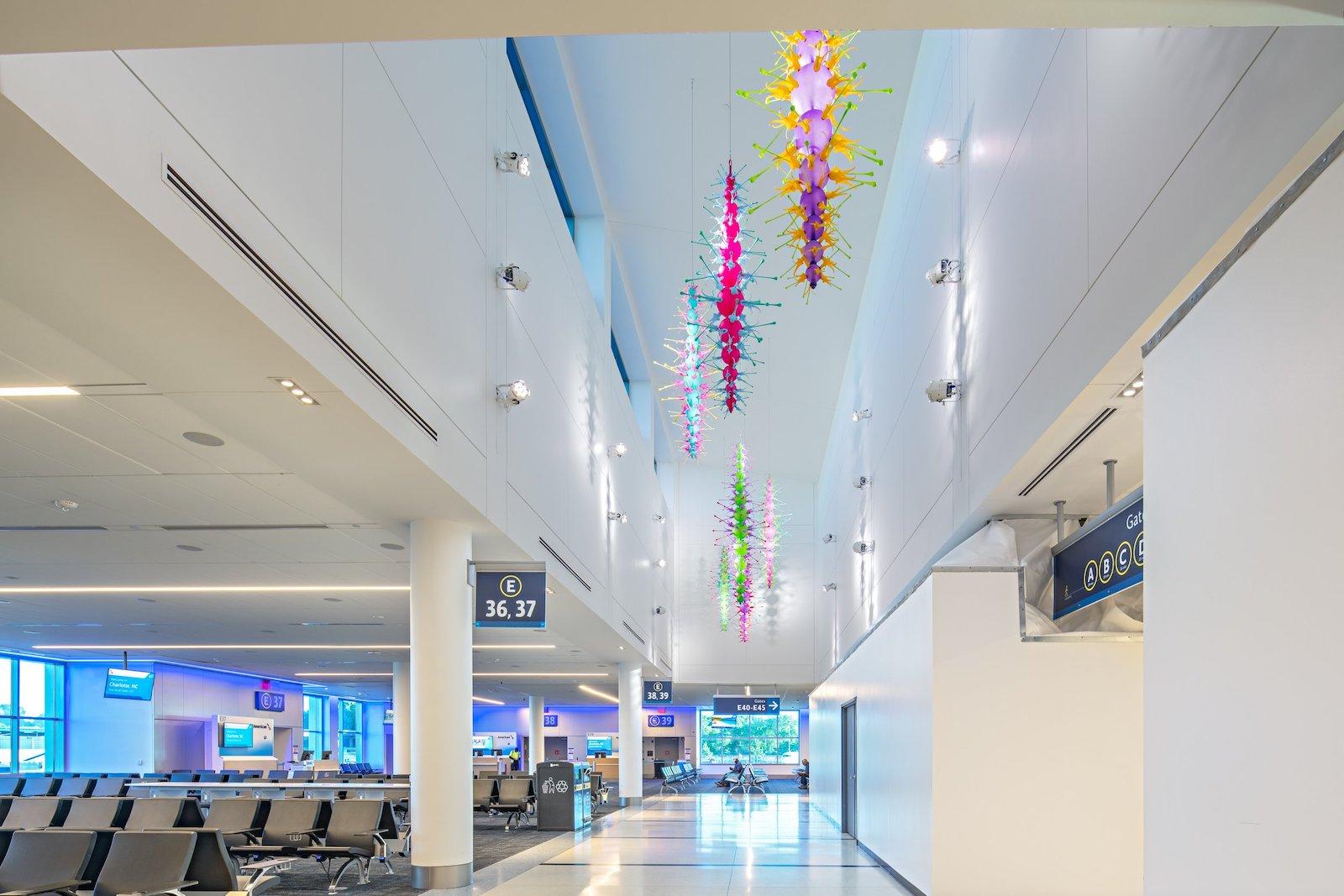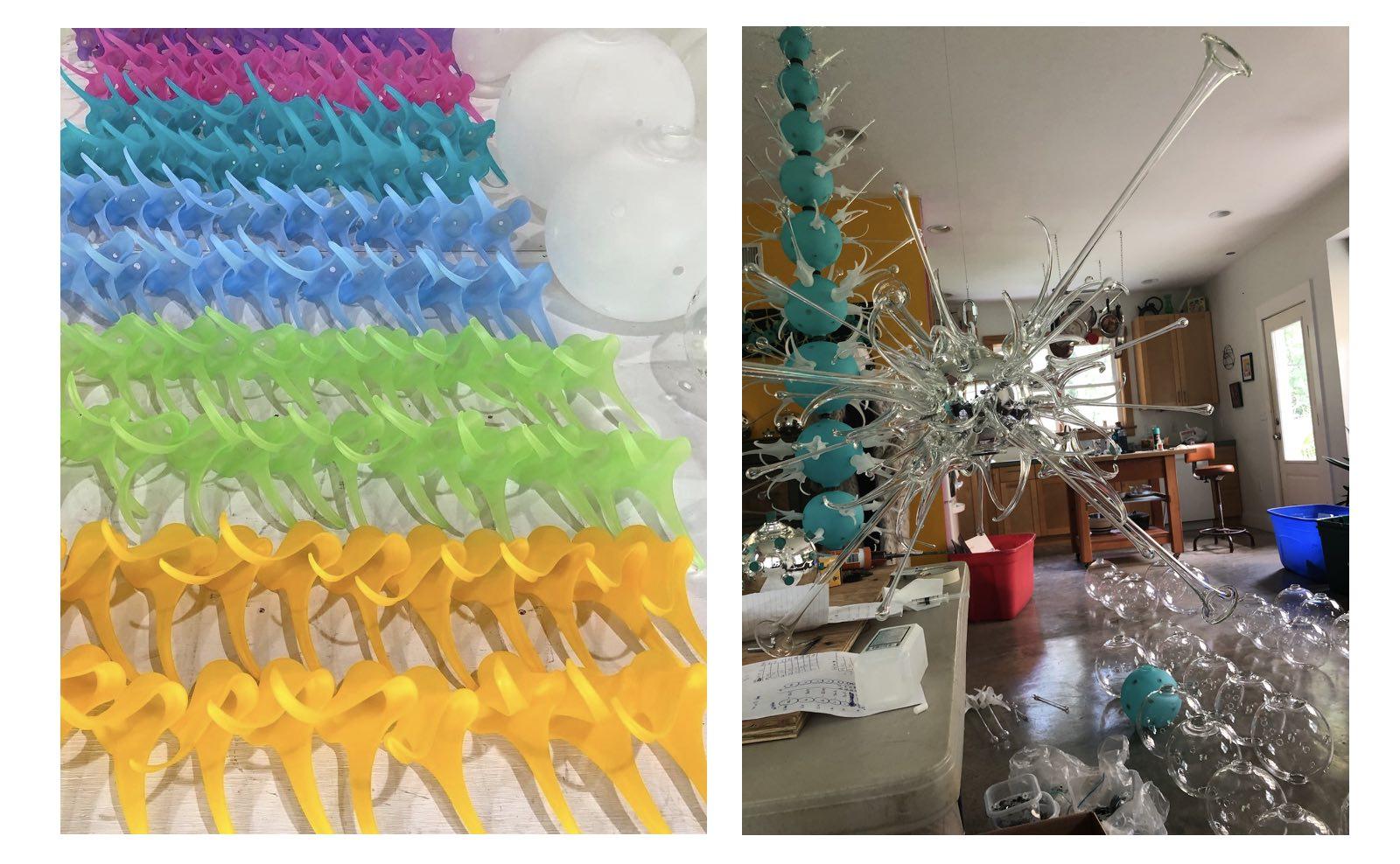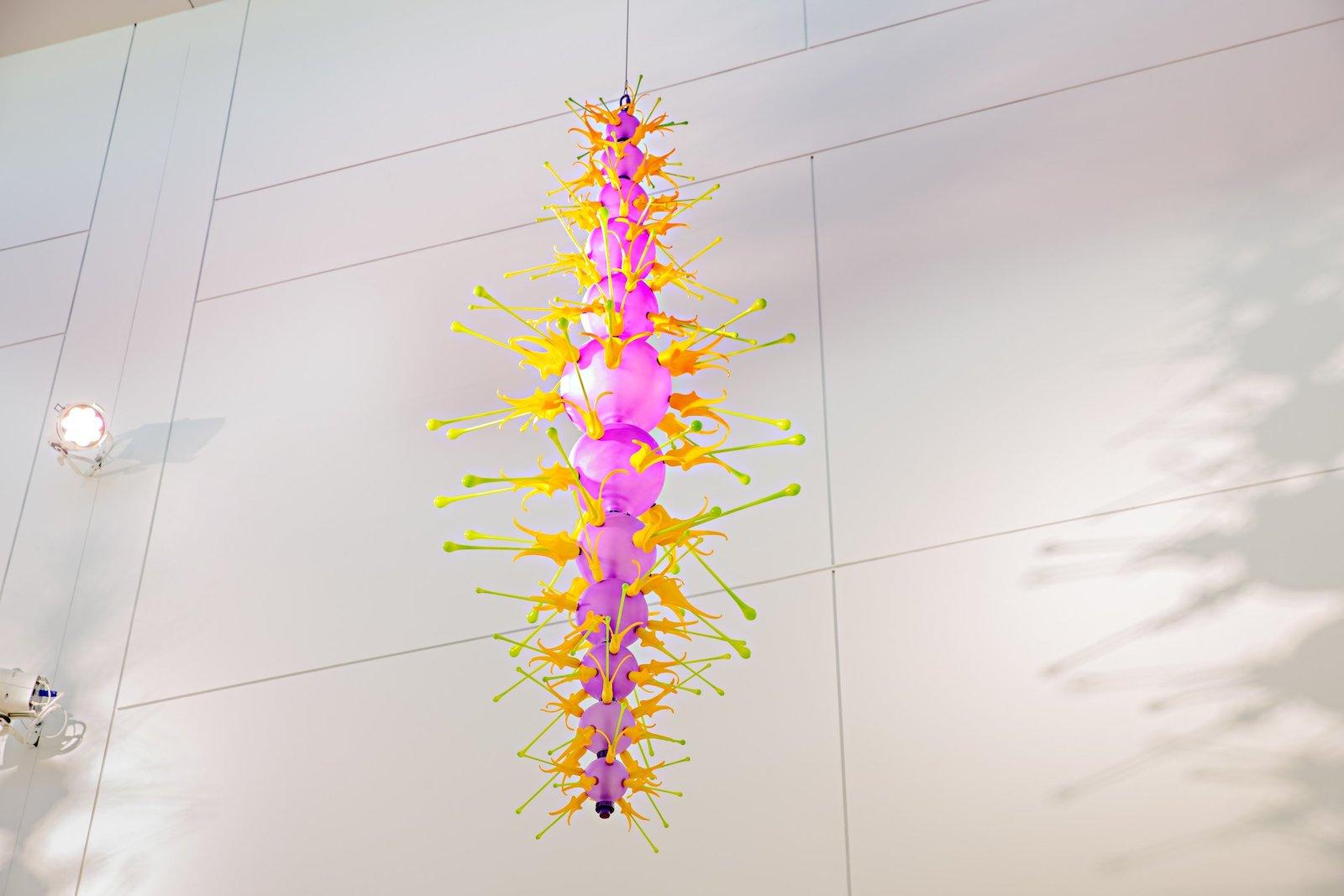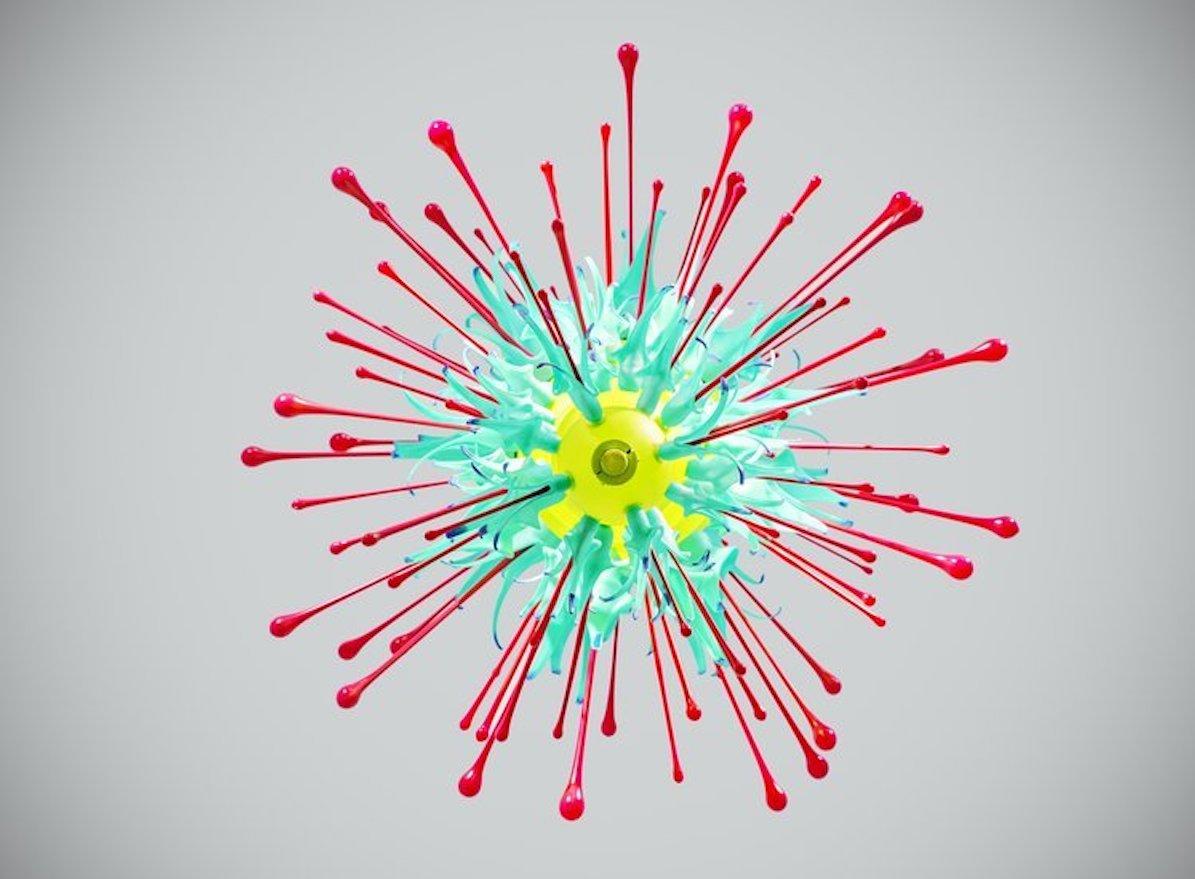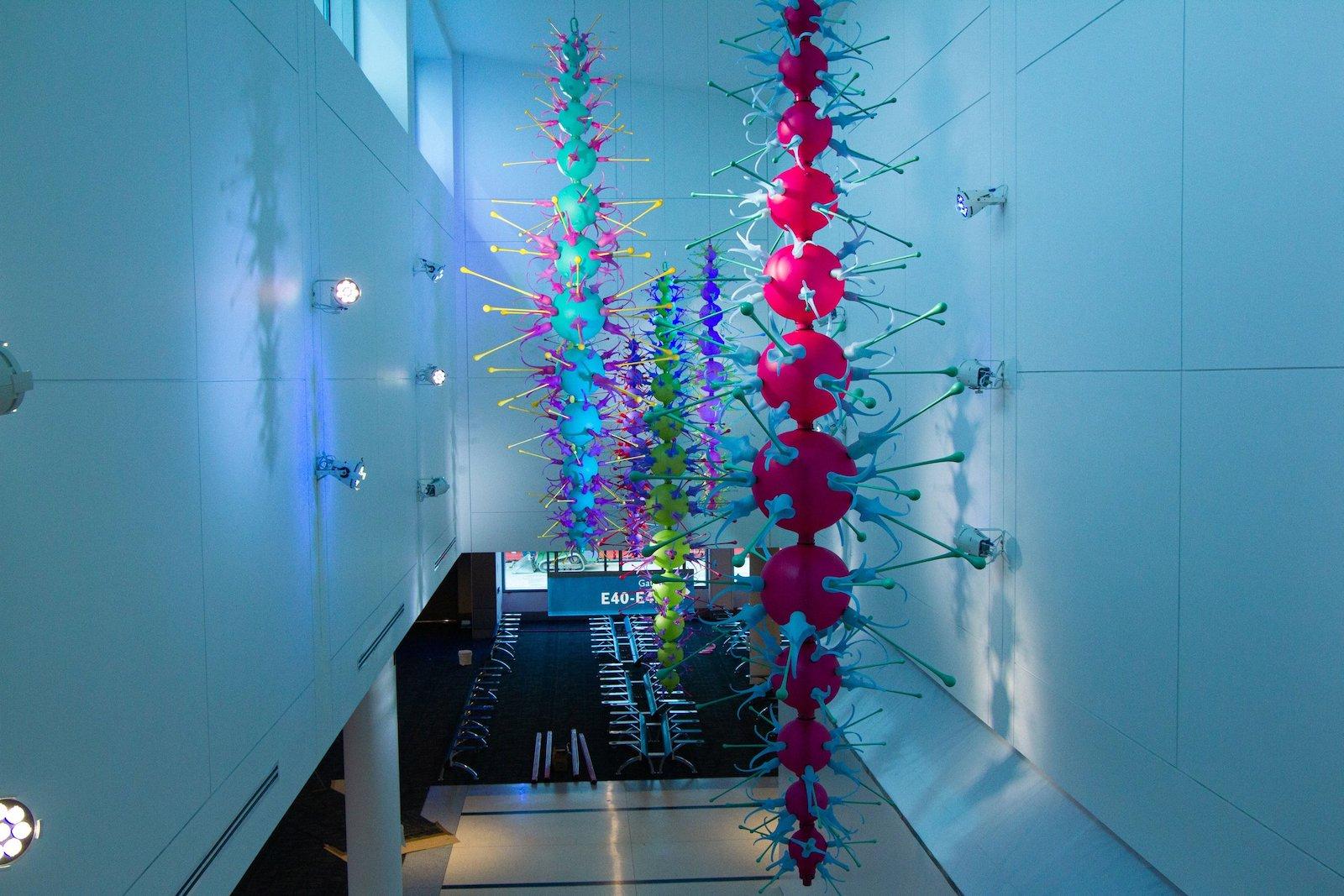Ironically, Davis has long been interested in misreadings.
In fact, the idea for this project was actually grounded in the concept of a viewer’s mistaken assumptions—from an established audience tendency to confuse Davis’ glass sculptures for plastic to the ease with which glass can be transformed by light.
Light in particular is used brilliantly in the final product. “The true color of the glass is only shown when the natural light of the space cascades through the windows,” Davis shared. “Programmed lighting sequences create color shifts on the glass pigments as well as shadows on the surrounding walls. Blue reads as purple, green becomes pink,” and so on.
The project’s working title, Antinomies, was intended to “describe the common reaction of the viewer as a contradiction between two beliefs or conclusions that are in themselves reasonable, a paradox.” In other words, he decided to ground the project in dichotomous irony, then set out to create work designed to spark harmless misunderstanding. It was supposed to be playful.




